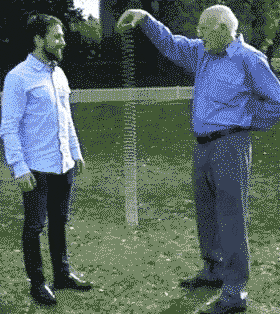Featured Posts

I wish I had a fort

The powerof positive thinking

NASA

Pray for Australia

Take care of each other

She has emerged

My soul feels so much better

I just ordered one. #Just2019HispanicThings

He really wanted his photo at the Halloween party, but was super scared of the spiders

The Only Thing More Contagious Than COVID19 Might Be This Fox's Smile
About
FAQ
Contact
Rules
Terms
Privacy
Feedback
Keyboard Shortcuts:
Previous Post · Next Post · + CTRL Skip Post
Previous Post · Next Post · + CTRL Skip Post
© 2025 FunSubstance · funny and entertaining pictures, memes, gifs & videos.



Now there is tension between both the points and when he let goes of point A,both point A and B rushes towards the midpoint of A and B but point B seems stationary because it is affected by both tension and gravity (which has the same value in this case) which cancels each other out.
Top part is also pulling on bottom part, causing it to fall slower
Gravity only propagates at the speed of sound in a material.
Basically slinkies only act like they're affected by gravity. When viewed in slow motion, it becomes clear that their acting isn't as flawless as they think it is.